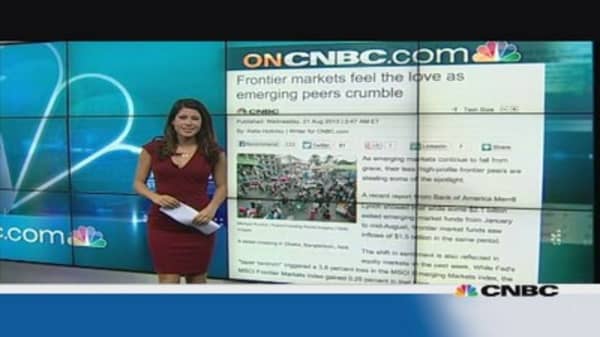Stickers used in messaging applications are delivering healthy revenues for Asian technology firms, and as the craze starts to sweep the Western world, more companies are looking for a slice of the cash.
The stickers, otherwise known as emojis are more advanced siblings of emoticons and have been a firm part of Japanese tech culture for the last ten years. After spreading first to the rest of Asia, they are now reaching the Western world, boosted by Apple's inclusion of them in its iOS5 software.
Stickers can be anything from simple smileys to dancing pandas, and can express a range of emotions. Their global acceptance was underlined last week with the release of pop star Katy Perry's latest music video, which heavily featured the colorful images.
(Read More: After Tumblr, 8 More Potential Takeover Targets)
But behind the cuteness lies cash. Japanese company Line, credited as one of the first companies to monetize the trend, announced core revenue of 9.77 billion yen ($100 million) in its second quarter. Sticker purchases made up 27 percent ($27 million) of revenue, and the company hopes to have 300 million subscribers by the end of the year. In a press conference on Tuesday, Line revealed there have been over 7 billion messages and 1 billion stickers sent as of August 2013, according to industry blog SD Japan.
Korean rival, Kakao Talk, is having a similar boom. Its mobile games service generated 348 billion Won ($311 million) in revenue during the first half of 2013.
"You can see how many tens of millions they are doing every quarter, it's very profitable," Riku Salminen, CEO of Jongla, a Finnish messaging app provider, told CNBC.
Jongla launched its first messaging app last year, after the company was established in 2009. Salminen has instituted the "Jongla Way" at the firm, using local content from local illustrators around the globe, who create graphics suited to separate cultures.
(Read More: Facebook's Zuckerberg unveils initiative to make internet globally available, affordable)
The firm's instant messaging app is free to download, and 50 percent of the stickers are free. But the 50 percent that aren't free drive nearly all of the company's revenues, despite selling for less than two dollars per pack.





